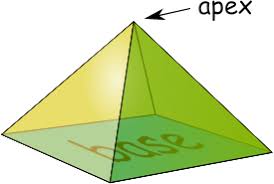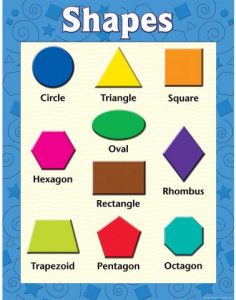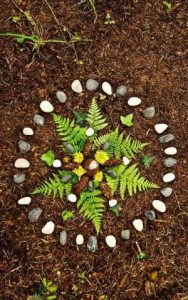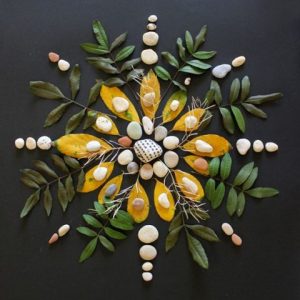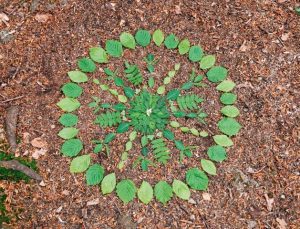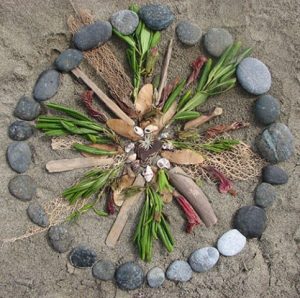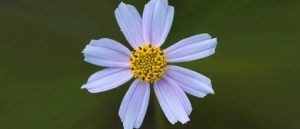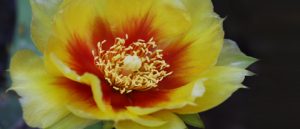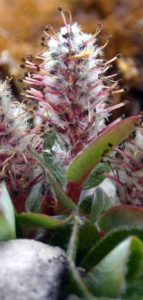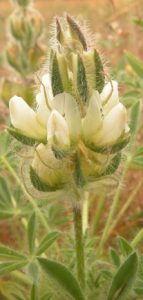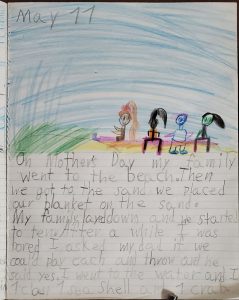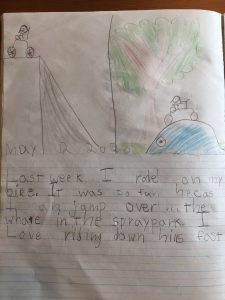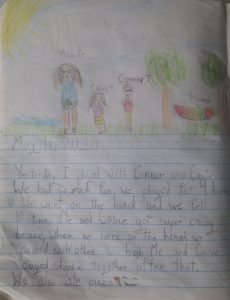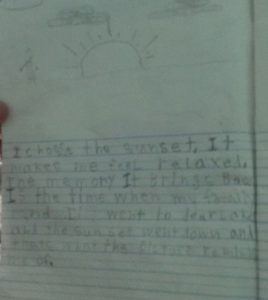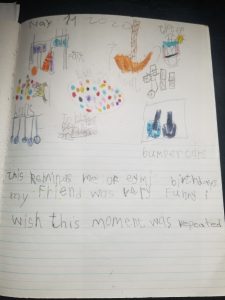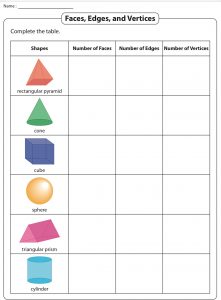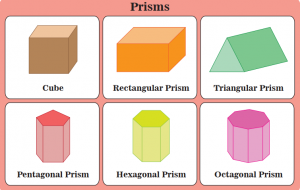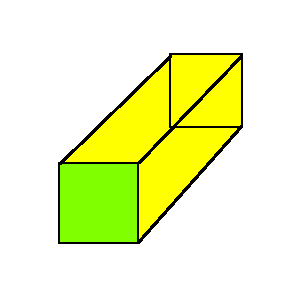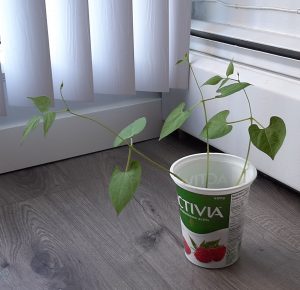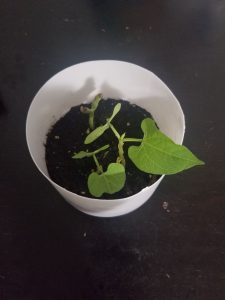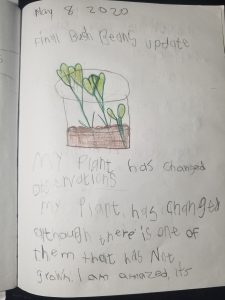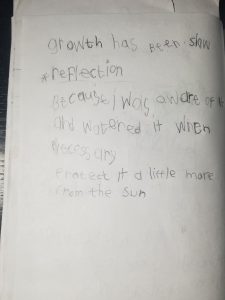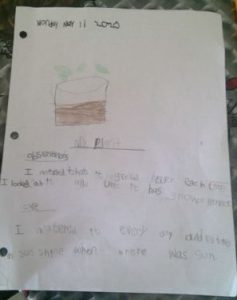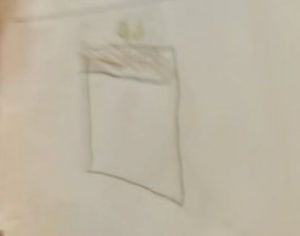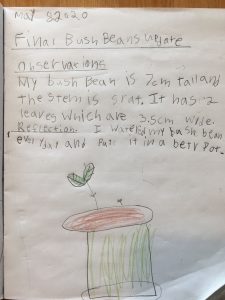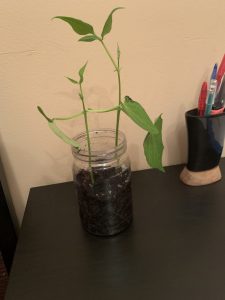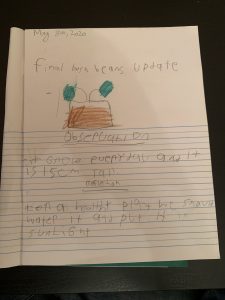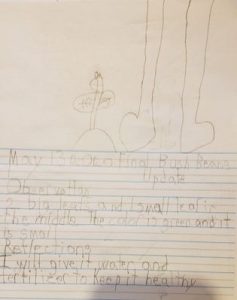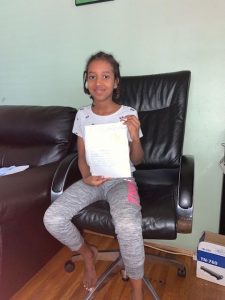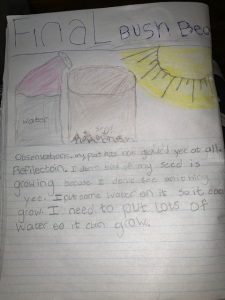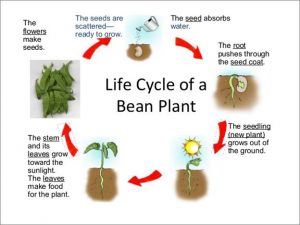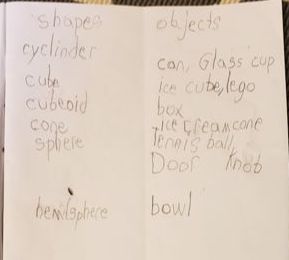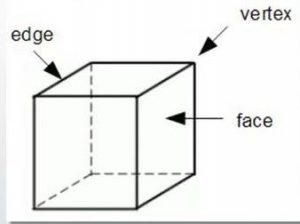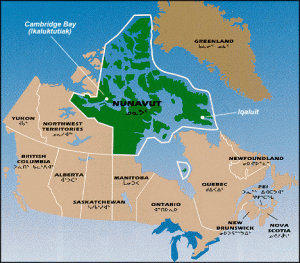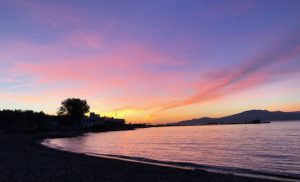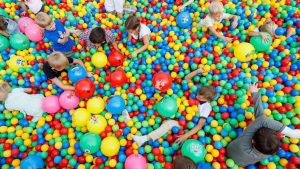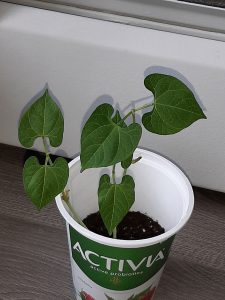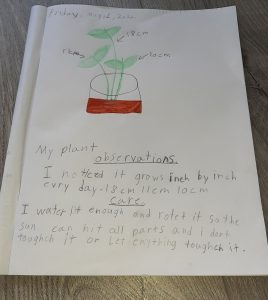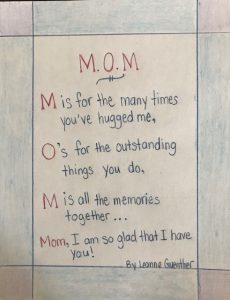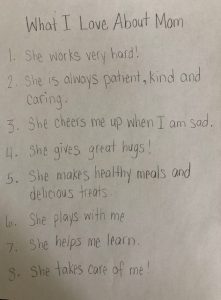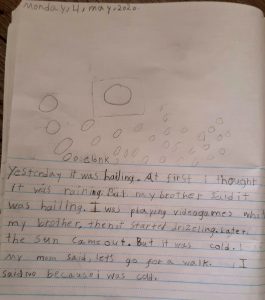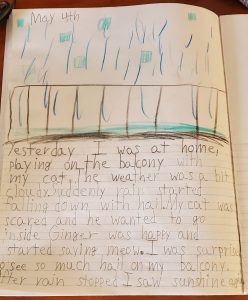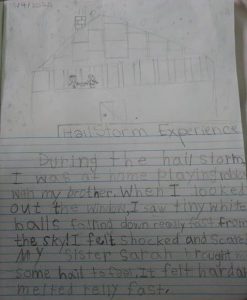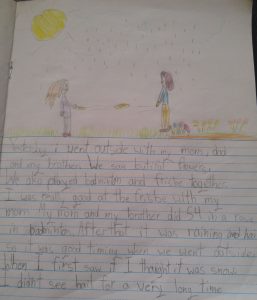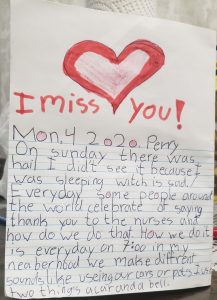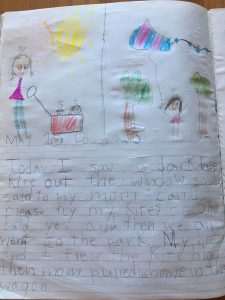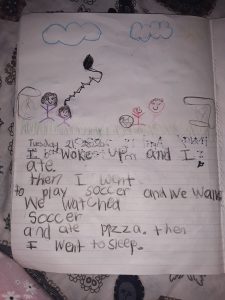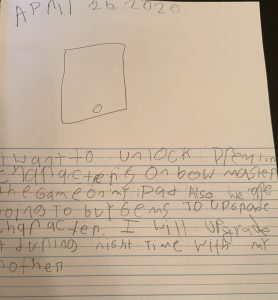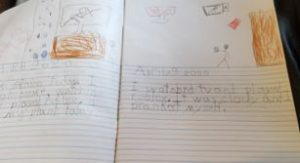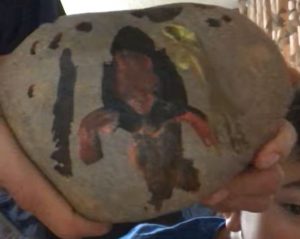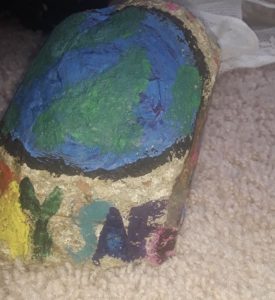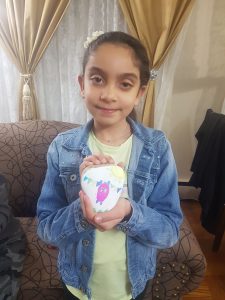Press the play button if you would like to listen to this post. If you can’t hear it, click here.
Hello Everyone,
Welcome to our final Friday on the Division 10 Class Blog. As I will be in the classroom next week, posts will now be limited to Wednesdays. Please be assured that there will still be a variety of opportunities for learning but instead of being spread out throughout the week, it will be combined into one, slightly longer post. I will still be available by email to answer any of your questions and support your home learning needs. No matter your location, I hope to make our final month of school this year, a great one.
Importance of Plants
Last week you were asked to reflect on the importance of plants and make a list of their uses. Thank you to everyone who sent in their work. Here are a few responses from:
Anna
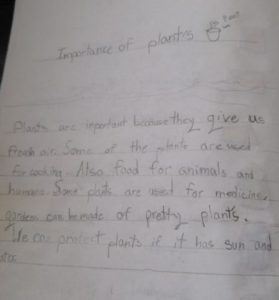
Kaylee
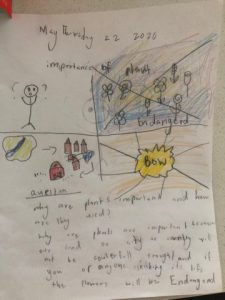
Malcolm
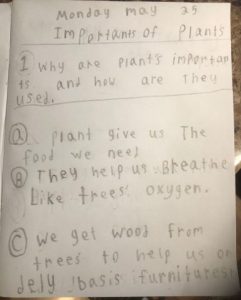
Camila
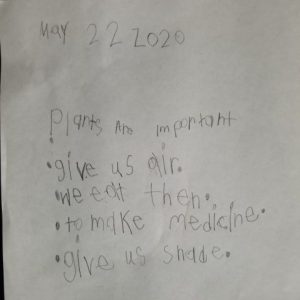
Emma
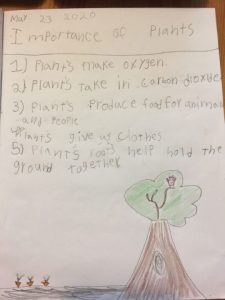
Perry
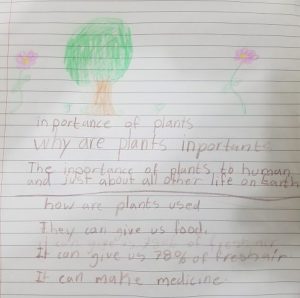
As you can see from their ideas, plants:
- Make oxygen
- Provide food for people and animals
- Are used to make medicine
- Give us wood to build
- Are used to make cloth
- Provide shade
- Are habitats for bugs and animals
- Have roots which hold layers of soil together
- Provide colour, beautiful aromas and joy
It is clear that plants play an important role in our lives and should not be taken for granted. I invite you all to continue nurturing plants and nature so that we may continue to benefit from the gifts they provide us.
Virtual Field Trip
Today we will travel to another part of Canada. In keeping with our discussion on the importance of plants, we will be exploring an area of the country that is largely made up of farmland. This area is often referred to as the prairies and includes the provinces of Alberta, Saskatchewan and Manitoba.
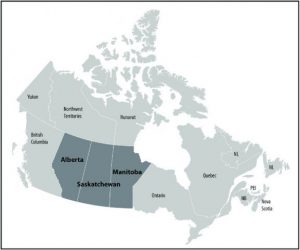
Although these provinces have flourishing parks with large trees as well as built-up, busy cities, a large portion of their land is flat with nutrient rich soil. This terrain makes it ideal to grow large amounts of food which is then distributed to other parts of Canada and the world.
I invite you to watch the following videos to see the size of the farmland and the beauty of the landscape. The first video offers stunning aerial views of the fields and farm towns around them. Please note you will have to click the link as the video will not automatically appear on the blog. The second, highlights a wheat field that is being harvested in Manitoba and the third is a 360 degree tour of a grain farm in Saskatchewan. This video shows the process of growing wheat from seed to harvest. The information might feel slightly overwhelming (just do your best), but I enjoy how it is interactive and you can move your device to look around. Try it out.
Click here to watch The Prairies: Flat-Out Beautiful
After watching the videos, write the title Canadian Prairies in your Response Booklet and respond to the following questions.
Have you been to a farm before? (Perhaps a pumpkin patch or berry farm? Maybe you have visited an orchard in the Okanagan or a farm in another country?) If you have, what details do you remember? How are the farms on the prairies similar? How are they different?
If you haven’t been to a farm, do the prairies look like a place you would like to visit? Why or why not?
I look forward to your responses!
Get Moving
This week we will try another video from Go Noodle. Have fun dancing along with Young Dylan!
Have a great weekend everyone! I will leave you with a couple Mandalas sent in by your classmates. They brightened my day. I’m sure they will do the same for you!
James’ creation…
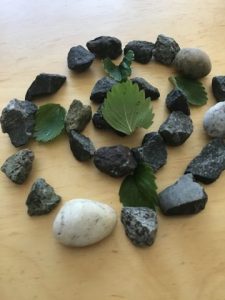
and Mariia’s.
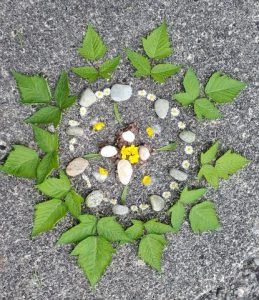
Well done and thank you both for sharing!

